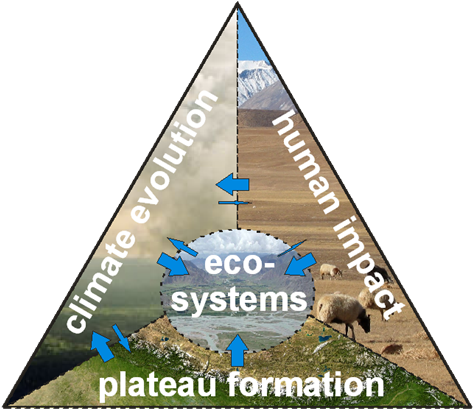Poster, EGU General Assembly 2010, Vienna: 02.05.2010 - 07.05.2010
Abstract:
The central goal of the project DynRG-TiP (Dynamic Response of Glaciers on the Tibetan Plateau) is improving our understanding of atmosphere-cryosphere interactions on the Tibetan Plateau (TiP) by adding new data and improved methods combining field studies, remote sensing and numerical modelling. The setup of two automatic weather stations (AWS) on the slopes of Zhadang (north exposed) and Tangse River No. 2 Glacier (south exposed) – 5.850 m a.s.l, Western Nyainqentanglha Mountains (NyM) - in May 2009, joining the previous installations of the Chinese co-operating partners from the Institute of Tibetan Plateau Research, make the Zhadang glacier one of the most extensively equipped and best observed glaciers in Central Asia. Based on previous studies (Kang et al., 2009), a summer ablation lower than 2 m w.e. was expected at the positions of the AWS. However, at the time of the second field campaign in October 2009, both stations had fallen over. This incidence occurred already in mid-July, despite of the mast being fixed three meters deep in the ice. At that time approximately half of the ablation period had passed and the estimated lowering of the surface already summed up to about 2 m. The ice-atmosphere interaction processes leading to this exceptional high melt rates are studied using the data gathered from the two AWS, supplemented by the output of the mesoscale Weather Research and Forecasting (WRF-ARW) model. The downscaling approach using two-way nesting, following Box et al., 2006 and Caldwell et al., 2009, allows substantial improvements in surface mass balance (SMB) computations, providing additional spatial information on long-term time series. A first assessment of the downscaling capabilities of the WRF modelling system is realized for the ablation season 2009, analyzing the output of a 2 km grid resolution nested domain centered on the NyM.

